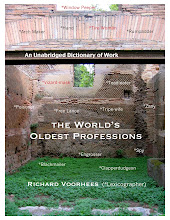A constable.
“The shocking sight of Moneins’s murder, and no doubt of other disturbing scenes during that week [in 1548], taught Montaigne a great deal about the psychological complexity of conflict and the difficulty of conducting oneself well in crises. In this case, the violence was eventually calmed, mainly by Montaigne’s future father-in-law, Geoffrey de La Chassaigne, who negotiated a truce. But the city would suffer a severe punishment for allowing such disobedience. Ten thousand royal troops were sent there in October under the Constable de Montmorency; the title ‘constable’ officially meant only ‘chief of the royal stables,’ but his job was one of immense power. The troops remained for over three months, with Montmorency conducting a reign of terror. He encouraged his men to loot and kill like an occupying force in a foreign country. Anyone directly identified as having taken part in the [salt-tax] riots was broken on the wheel, or burned. Everything was done to humiliate Bordeaux physically, financially, and morally.”
Sarah Bakewell, How to Live or A Life of Montaigne in One Question and Twenty Attempts at an Answer (2010).

No comments:
Post a Comment